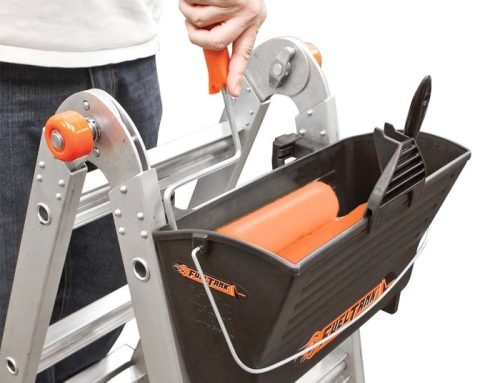We have said it before and we will say it again, buying a ladder can be an incredibly  difficult decision. There are many different types available, in different lengths, shapes, sizes and they are all made from different materials. It is a minefield really.
difficult decision. There are many different types available, in different lengths, shapes, sizes and they are all made from different materials. It is a minefield really.
But, we are always trying to make your ladder buying experience a little easier. So, in this article we have taken a look at the three main different ladder materials and how you can choose the best material and therefore the best ladder for your needs.
Having the right ladder for the job can potentially mean the difference between completing a task safely or not. Making the wrong choice can be extremely dangerous and ignoring the limitations of climbing equipment can result in a fall or serious injury. When choosing a ladder, some of the main considerations include style, size, load rating and material. To make your decision, you need to think about where the ladder will be used, what sort of projects will be undertaken, whether the ladder will be used around electricity or power lines, how much weight will the ladder be expected to support and what heights will you need the ladder to reach.
Ladders are typically constructed of one of the following 3 materials: wood, aluminium or fibreglass. When selecting what material the ladder is constructed of, a key consideration should be whether or not the ladder will be used around a live electricity source. Aluminium will conduct electricity, so alternatives may be preferable for tradesmen who regularly work with live wiring to prevent injuries through electric shock. Both wooden and fiberglass ladders may be more suitable, with both materials being electrically non conductive when clean and dry.
Another consideration may be where the ladder will be stored. Ladders of wooden construction are prone to rotting and splintering if they are not stored in protected and dry conditions and and fibreglass ladders may also degrade over time if exposed to the outdoors for prolonged durations. Both may become unstable and withstand less weight, causing a higher chance of accidents at height.
 Depending on its intended use, portability may be a factor for consideration when choosing a ladder and certain materials are characteristically more transportable due to their weight. Many tradesmen choose aluminium ladders for this reason, as their ladders may be moving in and out of their vans on a very regular basis. Wooden ladders are less easy to move and as a result, they are more commonly used in residential homes and stored in garages.
Depending on its intended use, portability may be a factor for consideration when choosing a ladder and certain materials are characteristically more transportable due to their weight. Many tradesmen choose aluminium ladders for this reason, as their ladders may be moving in and out of their vans on a very regular basis. Wooden ladders are less easy to move and as a result, they are more commonly used in residential homes and stored in garages.
Cost may be a factor to consider when selecting a ladder and both wooden and fibreglass ladders typically emerge as very cost effective options, compared to modern aluminium alternatives.
Ultimately, there is no one perfect material for a ladder to be constructed from; instead, a decision must be made about which type of ladder best matches the intended use, environment and storage arrangements to ensure safety of the user and those around them.
As we mentioned at the beginning of the article, material is only one factor to consider in the ladder buying process but it is a very important factor. When you have selected the material we would then advise all customers to think long and hard about what type of ladder would benefit them most. There are so many to choose from and like the material each are better suited to different tasks.
If you require further information or help, then contact one of our friendly Ladder Customer Service team members who would be happy to advise on the different ladders we have available.






Leave A Comment
You must be logged in to post a comment.